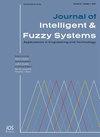预处理与CNN混合模型的小麦病害识别
IF 1
4区 计算机科学
Q3 COMPUTER SCIENCE, ARTIFICIAL INTELLIGENCE
引用次数: 0
摘要
在农业资源配置方面,诊断是重中之重,因为它直接影响到国家的GDP。作物早期分析对于验证作物的有效产量至关重要。计算机视觉有许多有趣和苛刻的问题,包括疾病检测。印度是仅次于中国的世界第二大小麦生产国。然而,现有的算法可以准确地识别小麦叶片最常见的疾病。为了帮助农民跟踪大面积的小麦种植,叶片图像和数据处理技术最近被广泛应用于昂贵的系统中。在本研究中,混合预处理实践用于消除不希望的失真,同时增强图像。使用模糊c均值(FCM)从预处理图像中分割出受影响的区域。然后使用卷积神经网络(CNN)将数据合并到疾病分类模型中。使用Kaggle数据和几个指标对其进行了测试,以了解所建议的方法的效率。研究表明,传统的长短期记忆(LSTM)技术对输入图像的准确率达到91.94%,而与CNN混合预处理模型的准确率达到95.06%。本文章由计算机程序翻译,如有差异,请以英文原文为准。
Identification of wheat plant disease using hybrid model of pre-processing with CNN
Diagnosis is given top priority in terms of farm resource allocation, because it directly affects the GDP of the country. Crop analysis at an early stage is important for verifying the efficient crop output. Computer vision has a number of intriguing and demanding concerns, including disease detection. After China, India is the world’s second-largest creator of wheat. However, there exist algorithms that can accurately identify the most prevalent illnesses of wheat leaves. To help farmers keep track on a large area of wheat plantation, leaf image and data processing techniques have recently been deployed extensively and in pricey systems. In this study, a hybrid pre-processing practice is used to remove undesired distortions while simultaneously enhancing the images. Fuzzy C-Means (FCM) is used to segment the affected areas from the pre-processed images. The data is then incorporated into a disease classification model using a Convolutional Neural Network (CNN). It was tested using Kaggle data and several metrics to see how efficient the suggested approach was. This study demonstrates that the traditional Long-Short Term Memory (LSTM) technique achieved 91.94% accuracy on the input images, but the hybrid pre-processing model with CNN achieved 95.06 percent accuracy.
求助全文
通过发布文献求助,成功后即可免费获取论文全文。
去求助
来源期刊

Journal of Intelligent & Fuzzy Systems
工程技术-计算机:人工智能
CiteScore
3.40
自引率
10.00%
发文量
965
审稿时长
5.1 months
期刊介绍:
The purpose of the Journal of Intelligent & Fuzzy Systems: Applications in Engineering and Technology is to foster advancements of knowledge and help disseminate results concerning recent applications and case studies in the areas of fuzzy logic, intelligent systems, and web-based applications among working professionals and professionals in education and research, covering a broad cross-section of technical disciplines.
 求助内容:
求助内容: 应助结果提醒方式:
应助结果提醒方式:


